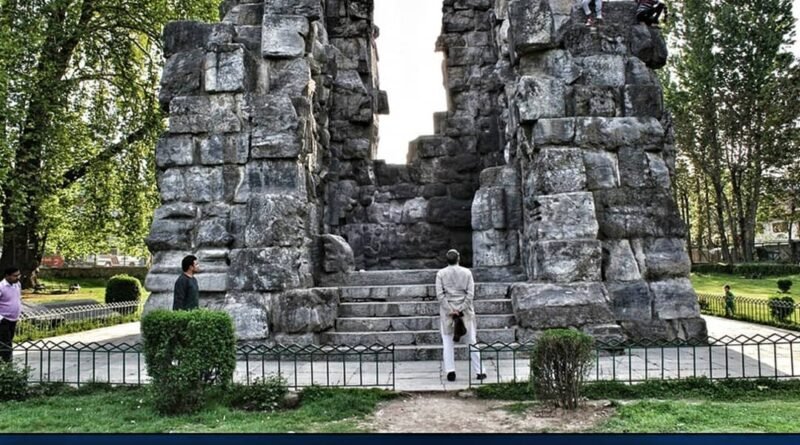Shankargaurisvara Temple
The Shankaragaurishvara Temple is a 9th century Hindu temple attributed to the Utpala dynasty. The temple is dedicated to the Hindu god, Shiva and located in Pattan, in the Baramulla district of Jammu and Kashmir, India. The temple was built by king Shankaravarman of the Utpala dynasty of Kashmir, who ruled between 883 and 902 AD.
The temple is in a dilapidated condition and worship is no longer conducted. It is built in a style similar to the Shankaracharya Temple.It is listed as one of the more than 15 important temples for promotion of tourism in the state of Jammu and Kashmir.
History
The temple was built by king Shankaravarman (883–902). His father Avantivarman had established the Utpala dynasty and after his death in 883 his son succeeded him. He built the temple in his capital city, then known as Shankarapattana, which is the present-day Patan, 27 kilometres (17 mi) away from Srinagar city, the capital of Jammu and Kashmir. He dedicated the temple to Lord Shiva. It is named after the king himself. His religious affiliation was of Hindu Shaivism. Apart from this temple, he also built another temple, next to it, in honour of his wife and named it the Sugandhesha Temple, which was also dedicated to Lord Shiva; built to the same plan and with intricate carvings. But it is of a much smaller size. Both the temples are seen in a dilapidated condition.
Features
The temple’s entrance porch, facing east, exhibits intricately sculpted carvings both on its exterior fascia as well as in the interior surfaces, and appears as if they are freshly chiseled and carved though built in late ninth century. The pediments are stacked symmetrically one above the other. The columns at the entrance are also elaborately sculpted in an architectural style which is akin to Kashmiri architecture, particularly in relation to the detailing. The plinth of the temple, and of the shrine next to it, is built in a peristyle, an open colonnaded pattern, within a walled enclosure, which is in the form of a cellular passage, remnants of which are still visible.
Other
Sankaragaurishwara temple at Patan, on the road between Srinagar and Baramula in Jammu and Kashmir, taken by John Burke in 1868. This general view of the west façade, with a measuring scale and a figure posed in the foreground, is reproduced in Henry Hardy Cole’s Archaeological Survey of India report, ‘Illustrations of Ancient Buildings in Kashmir,’ (1869), in which he wrote, ‘The Temple of Sankara Gaureshwara is elaborately carved, and some of the deatails are are as a sharp and clear as when first cut. The degree of elaboration in the porch-like projections and interior carvings…The repetition of the pediments one above the other, together with the highly decorated pillars in the porches, all prove that the style of building practised in Kashmir since the erection of the Jyeshteswara Temple, had in the progress of time followed the natural tendency for greater elaboration.’ Modern Patan, located about 27 kms from Srinagar, is the site of Shankarapattana which was founded by Shankaravarman of Kashmir’s Utpala dynasty (ruled 883-902) as his capital. By this time Kashmir had become a great centre of the Shaivite religion and philosophy. Like his predessor Avantivarman, Shankaravarman built two temples of which only the ruins remain, the Sankaragaurishwara Temple and the Sugandhesha Temple. Both dedicated to Shiva, they are seen as a late flowering of Kashmiri temple architecture. The former is named after the ruler and the latter is said to be named after his queen. They are built to much the same plan as earlier temples but their stones display a greater refinement and precision of cutting and carving.



















